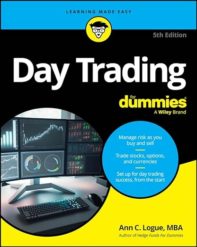Your New Year’s resolution may be to save money, but how to get the money you saved at the grocery store out of your wallet and into a savings plan? It’s a strangely mechanical problem, isn’t it?
If you’re having trouble getting hold of the money you are saving, start by keeping track of what you spend. You can do this by using only cash and setting aside what’s leftover.
In her book Saving for Retirement (Without Living Like a Pauper or Winning the Lottery)
, Gail MarksJarvis suggests starting out by putting all the change you receive in a week in a jar. Count it at the end of the week. This is money that you really didn’t miss, so it’s an amount you can put into savings without affecting your lifestyle.
If you aren’t a big user of cash, keep track of your savings on paper (or electronically). Compare what you spent to your budget for the week. If your budget for groceries was $60 and you spent $54, then you have $6 that you can move to a savings account. Keep track of that money and don’t spend it elsewhere.
Next, figure out what to do with your money. Consider these two risks: inflation, or losing your purchasing power; and volatility, actually losing money. Investments that have the least volatility tend to be the worst for protection against purchasing power. Bank accounts, for example, rarely offer a return that beats inflation. Likewise, investments that are the best protection against inflation, such as stocks, tend to have the most price volatility. The best way to get around the drawbacks is to put your money in both types of investments.
To start, go to your bank and get a savings account linked to your checking account. Then, you can transfer money as you go based on your savings each week. You can also set up a direct-transfer program that will move a fixed amount of money from checking to savings on a regular basis. Bring in your jar of change and have the money deposited into savings (make sure the bank won’t charge you a fee for this.) Yes, interest rates are close to zero. That’s OK. For now, you are establishing a habit.
Next, go to your employer and find out the requirements for participating in your company’s defined contribution retirement plan, if your employer offers one and you are not already contributing. Sign up, setting up a payroll withdrawal that you can afford. You’ll probably be asked to select a mutual fund; in many cases, the large-cap U.S. stock fund is a good long-term option. If your company does not offer a retirement plan, open up an IRA with a mutual fund company. Google “low-cost U.S. index mutual fund” to find one. Most mutual fund companies have websites and customer service representatives who will walk you through the opening of the IRA and set up a monthly transfer from your checking account.
As the money in your savings account grows, you can move it to other investments to improve your diversification, such as bond funds or international stock funds. Any money you will need quickly, such as an emergency fund or a down payment for a house you plan to buy within three years, should be kept in a low-volatility account such as a savings account.




These are some great suggestions. I really like the idea of taking what you saved at the grocery store and putting it into savings instead of mindlessly spending it.
Thanks!